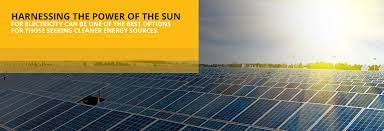Determining Your Home Solar Power Energy Needs - Part 1 : Hardware and Cost Estimate
Introduction:
With the increasing popularity of solar power, many homeowners are considering harnessing the energy of the sun to power their homes. However, before investing in a solar energy system, it is crucial to determine how much solar power your home needs. This article aims to guide you through the process of estimating your home's solar power energy requirements, the necessary hardware, and the associated cost.
Assessing Energy Consumption:
The first step in determining your home's solar power needs is to evaluate your energy consumption. Review your utility bills and identify your average monthly kilowatt-hour (kWh) usage. This data will serve as a baseline to understand how much electricity your solar energy system should generate.
Consider Energy Efficiency:
Before sizing your solar system, it's beneficial to enhance your home's energy efficiency. Implement energy-saving measures such as LED lighting, insulation improvements, and efficient appliances. By reducing your energy consumption, you can optimize the size and cost of your solar energy system.
Estimating Solar System Size:
To estimate the size of the solar system required, you'll need to consider factors such as geographical location, available roof space, and sunlight exposure. Solar panels are typically rated in watts (W) or kilowatts (kW). A general rule of thumb is to multiply your average monthly energy consumption (kWh) by 1.25 to account for system inefficiencies and future energy needs. For example, if your average monthly consumption is 800 kWh, multiplying it by 1.25 gives you a recommended solar system size of 1,000 kWh or 1 kW.
Choosing Solar Hardware:
Once you have determined the system size, you need to select the necessary solar hardware. This includes solar panels, inverters, and mounting equipment. Solar panels come in various types, such as monocrystalline, polycrystalline, and thin-film, each with its own efficiency and cost considerations. Inverters convert the generated solar energy into usable electricity for your home. Additionally, consider whether you want a battery storage system to store excess energy for later use.
Cost Estimation:
The cost of a solar energy system depends on multiple factors, including system size, hardware selection, installation complexity, and regional variations. Generally, solar energy systems are priced per watt (W) or kilowatt (kW). As of 2021, the average cost of a residential solar system in the United States ranges from $2.50 to $3.50 per watt. Using this range, a 5 kW system would have an estimated cost of $12,500 to $17,500 before any available incentives or tax credits.
Financial Incentives and ROI:
When considering the cost of a solar energy system, it's essential to explore available financial incentives. Many governments offer tax credits, rebates, or grants to incentivize solar adoption. Additionally, net metering programs allow you to sell excess energy back to the grid, further reducing your electricity costs. Calculate the return on investment (ROI) by comparing the upfront costs with the long-term savings generated by the system.
Conclusion: Determining your home's solar power energy needs involves assessing your energy consumption, considering energy efficiency improvements, estimating system size, selecting appropriate solar hardware, and estimating costs. By following these steps, you can make an informed decision about the size and cost of your solar energy system. Remember to consult with solar professionals to ensure accurate estimations and explore available financial incentives to maximize the benefits of your investment in solar power energy.














